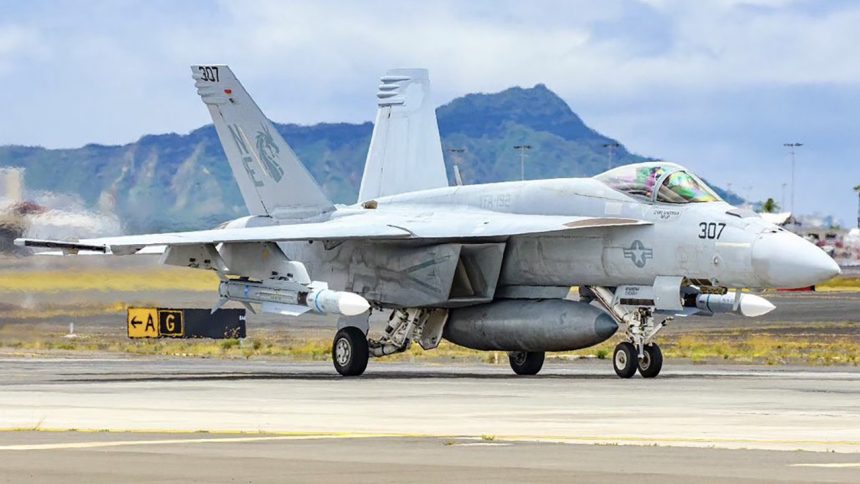The two missiles sport the designation XAIM-174B (or NAIM-174B) and were carried by Super Hornets belonging to the VFA-2 and VFA-192 taking part in RIMPAC 2024 exercise.
On Jul. 2, 2024, an F/A-18E Super Hornet belonging to the VFA-192 “Golden Dragons” deployed with CVW-2 aboard USS Carl Vinson aircraft carrier was photographed taxiing at Joint Base Pearl Harbor-Hickam, Hawaii, carrying two AIM-174B missiles, the air-launched variant of the SM-6 missile.
The shots taken by photographer @aeros808 who told us that at least one Super Hornet from two flights of two aircraft from VFA-2 and VFA-192 flew with the new (inert) AIM-174Bs.
View this post on Instagram
The Super Hornets are among the assets currently taking part in Rim of The Pacific 2024 (RIMPAC 2024), the world’s largest international maritime exercise hosted by the U.S. Navy and started on June 27, 2024. The drills involve 29 nations and more than 25,000 personnel, set to run June 27 to Aug. 1, in and around the Hawaiian Islands.
This is the first time we got a confirmation that the air-launched variant of the Standard Missile 6 (SM-6) surface-to-air missile designed to be used on Navy ships in conjunction with the Aegis Combat System and also known as the RIM-174 Standard Extended Range Active Missile (ERAM), has been developed for the air-to-air role. In fact the designation XAIM stands for eXperimental Air Intercept Missile (once the weapon completes testing and is fielded, it will be known as AIM-174B).
Actually, it could also be NAIM as the N prefix is used for special tests and modifications: “used for vehicles, which are modified so extensively for special tests, that a reconversion to the original configuration is neither planned nor feasible at reasonable costs.”
Here’s a photo we received from Instagram user the_808_airspace who shot a VFA-2 F/A-18F taking off with the AIM-174B clearly visible under the left wing.
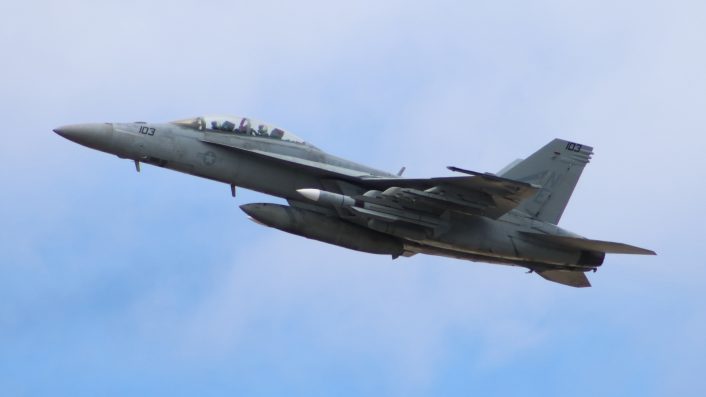
Here’s Dragon 307 taking off with two AIM-174Bs.
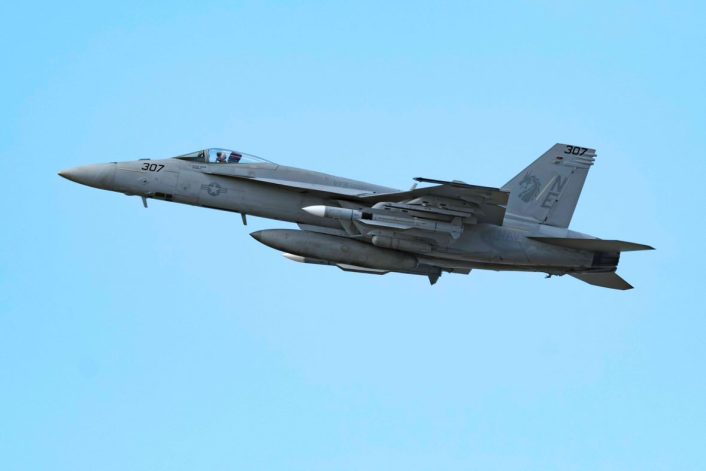
Previously, on Apr. 17, 2024, a US Navy F/A-18 Super Hornet most probably from Air Test and Evaluation Squadron (VX) 9 was spotted with with the same missile about 60 miles north of Naval Air Weapons Station China Lake during testing that preceded the delivery of the AIM-174B to the squadron likely to carry out Operational Test and Evaluation (OT&E), a testing phase conducted on production, or production representative weapons, to determine whether systems are operationally effective and suitable to support a Full-Rate Production (FRP) decision.
The very first sighting of a Super Hornet carrying an SM-6 variant dates back to 2018, when an F/A-18F from VX-31 was photographed with the same missile under its wing: this means that the U.S. Navy is working on an air-launched version of the SM-6/RIM-174 from at least six years.
Should be DATM-174B, not CATM-174B, was too quick on the trigger (again). DATM indicates it is ground training round as opposed to CATM for a flight training round. pic.twitter.com/JzPL5SFzTk
— John Ridge 🇺🇸 🇺🇦 (@John_A_Ridge) July 3, 2024
The RIM-174
As explained the AIM-174 is an air-launched variant of the RIM-174 Standard Extended Range Active Missile (ERAM), a key component in the US Navy’s air defense arsenal. Incorporated into the Aegis Combat System, the RIM-174 is primarily designed for long-range anti-air warfare. Additionally, it can be used for terminal phase ballistic missile defense and as an anti-ship missile.
The SM-6 utilizes the airframe of the SM-2ER Block IV (RIM-156A) missile, enhanced with an active radar homing seeker derived from the AIM-120 AMRAAM air-to-air missile. Capable of reaching speeds up to Mach 3.5, the missile has a maximum range of 200 nautical miles.
By significantly expanding the Aegis Weapon System‘s operational area, the SM-6 provides extended range anti-air warfare capabilities and enhances anti-surface warfare potential against enemy ships.
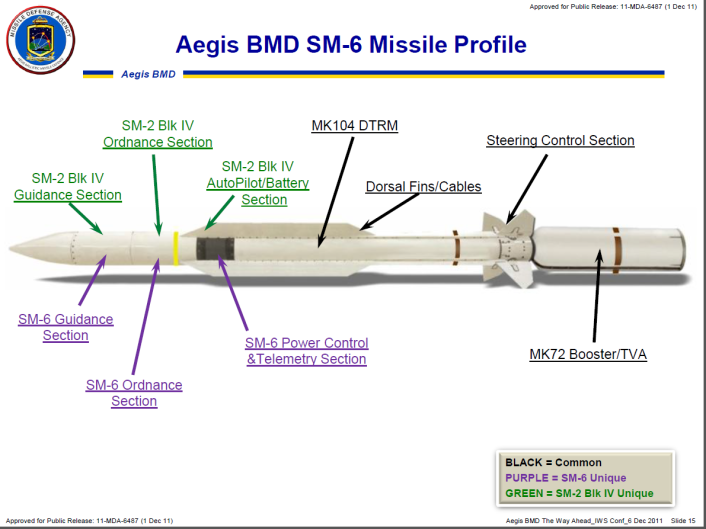
This year marked the first official combat use of the SM-6, when the Department of Defense confirmed that the USS Carney intercepted and destroyed an anti-ship ballistic missile fired by Houthi rebels in the Gulf of Aden on January 30, 2024.
Long range air-to-air missile
Fielding the AIM-174B would allow the U.S. Navy Super Hornets to carry out much longer range engagements than currently possible with the AIM-120 AMRAAM. The AIM-174B launch platform, integrated with E-2D, F-35 and AEGIS within the Naval Integrated Fire Control-Counter Air (NIFC-CA) architecture, would extend the Navy’s engagement range to intercept flying targets as done for naval targets using the baseline SM-6.
In other words, the new missile would eventually fill the gap left with the retirement of the AIM-54 Phoenix. The latter was a long-range air-to-air missile used by the U.S. Navy’s F-14 Tomcat and retired from service in 2004 with the retirement of the F-14 itself. The AIM-54 was a large missile with an impressive range (over 100 nautical miles) and multiple-target engagement capability.
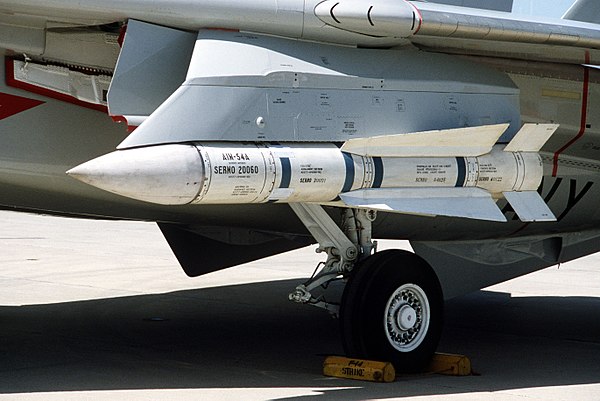
There wasn’t a direct replacement for the AIM-54 Phoenix in terms of range although the U.S. military has been working on developing advanced air-to-air missiles to enhance the capabilities of its fighter aircraft. The AIM-260 Joint Advanced Tactical Missile (JATM) is one such development intended to replace the AIM-120 AMRAAM (which is a medium range AAM). While not directly replacing the AIM-54 Phoenix, the AIM-260 aims to provide improved range and performance compared to the AIM-120.

